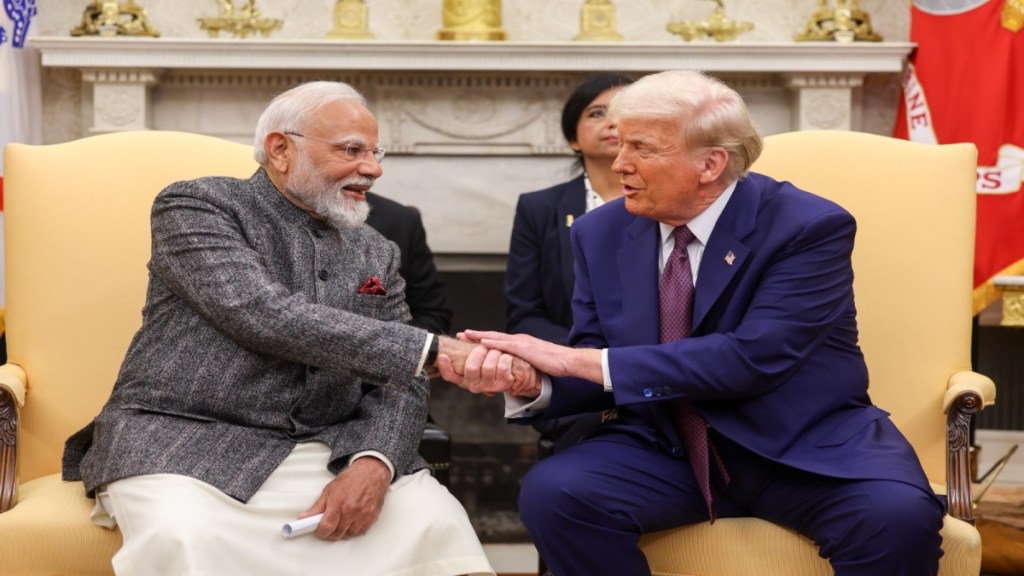On April 2, 2025, and in the days following, we will know whether the world will dance to the tune of the modern Pied Piper. If the United States imposed punitive tariffs on goods imported from other target countries, it will be in breach of the WTO rules, multilateral and bilateral trade agreements, and international laws and conventions. However, President Donald Trump does not care for the law, American or any other. He is a law unto himself.
Mr Trump has identified the ‘target’ countries and intends to impose tariffs on select goods imported from the target countries. India is on the list. Tariffs are a barrier intended to keep out foreign goods from entering the domestic market and competing with domestic goods. Apart from tariffs (i.e. customs duties) there are other duties such as anti-dumping duty and safeguard duty.
They are imposed under special circumstances but the exercise is a domestic exercise challengeable only in domestic courts and usually leans in favour of the domestic industry against the foreign exporter. Besides, there are non-tariff barriers under the cloak of quality standards, packaging norms, environmental guidelines, etc. This self-interest got a name — protectionism.
Protectionism not patriotism
Protectionism was part of the arsenal to attain ‘self-sufficiency’ or ‘self-reliance’. Protectionism was confused for patriotism. Modern economic theory and empirical evidence have repudiated the theory of ‘self-sufficiency’. Self-sufficiency is a myth. No country can produce all the goods and services that are desired and consumed by its people. A protectionist country will suffer from low growth, low investment, shoddy goods, limited choices and poor customer services. The history of the last 50 years has established conclusively that an open economy and free trade — not protectionism — spur economic growth. The richest countries of the world are countries that are open to trade and competition.
India adopted protectionism for nearly 40 years. Imports were heavily restricted. As a result, exports were also constrained. We had a division in the Ministry of Commerce and an army of officers under an authority designated as the Chief Controller of Imports and Exports. No one raised the obvious question, ‘we understand why you are the chief controller of imports, but please explain why you are the chief controller of exports?’ The irony of controlling exports in a country that desperately needed foreign exchange was lost on everyone.
Change of guard
Enter Dr Manmohan Singh as finance minister in 1991. His economic policies paved the way for shedding protectionism and opening the economy. The new Foreign Trade Policy, announced in 1991-92 tore up the dreaded Red book and declared that India was open to free trade.
Protectionism was formally abandoned, restrictive rules and regulations were scrapped, tariffs were progressively reduced, and Indian manufacturers were exposed to competition. The short-term and the long-term benefits of opening the economy were enormous.
When Mr Narendra Modi’s government was formed in 2014, India reversed gears and re-embraced protectionism. Self-sufficiency got a fancy name — aatmanirbhar. The government failed to recognise that the world had changed: countries had discovered their ‘comparative advantage’ and capitalised on their advantages. ‘Supply chains’ had been invented. A product such as a mobile phone was ‘made’ not in one country but in several countries. Unlike the hallowed ‘Made in Germany’ or ‘Made in Japan’, many products were ‘Made in the World’. Aatmanirbhar also led to a reinstatement of the discarded rules, regulations, licenses, permissions, restrictions and, more importantly, tariffs.
According to WTO, India’s simple average final bound tariff is 50.8%. With MFN, the Trade Weighted average tariff is 12.0%. These two numbers are a measure of how ‘protectionist’ India is.
Legitimate vs parochial interests
On the other hand, India, like any other country has legitimate interests that it is obliged to protect such as agriculture, fishing, mining, and handlooms, handicrafts and traditional occupations. They deserve protection because millions of lives and livelihoods are dependent on them. The world is not insensitive to these legitimate interests.
Mr Trump has fired his first salvo. He started with tariffs on imports of aluminum and steel, backtracked, and set a fresh date. On March 26, he imposed higher tariffs on automobiles and auto-parts. I suspect that Mr Trump will act like a sniper picking one target at a time and shooting it down.
India’s response so far has been secretive and reactive. The government announced tariff reductions in the budget for 2025-26. Mr Trump was not impressed. Mr Modi tried flattery, Mr Trump was not satisfied. The digital service tax (the ‘Google tax’) was withdrawn when the Finance Bill was passed. More concessions are under discussion. This is an unsatisfactory approach. Instead, there must be a comprehensive discussion and agreement on all tariff issues of mutual concern. It is apparent that Mr Modi has stooped but it is not yet clear whether Mr Modi will conquer.
India needs the support of friendly countries in its fight just as other countries need the support of India in their fight. Canada, Britain, France, Germany, Japan, South Korea and the European countries are India’s best allies in the tariff war launched by the United States. The wiser course appears to be to persuade these countries to form a collective and press America to negotiate with the collective of countries and reach a comprehensive agreement that will ensure that the world’s economic growth is promoted and sustained.
